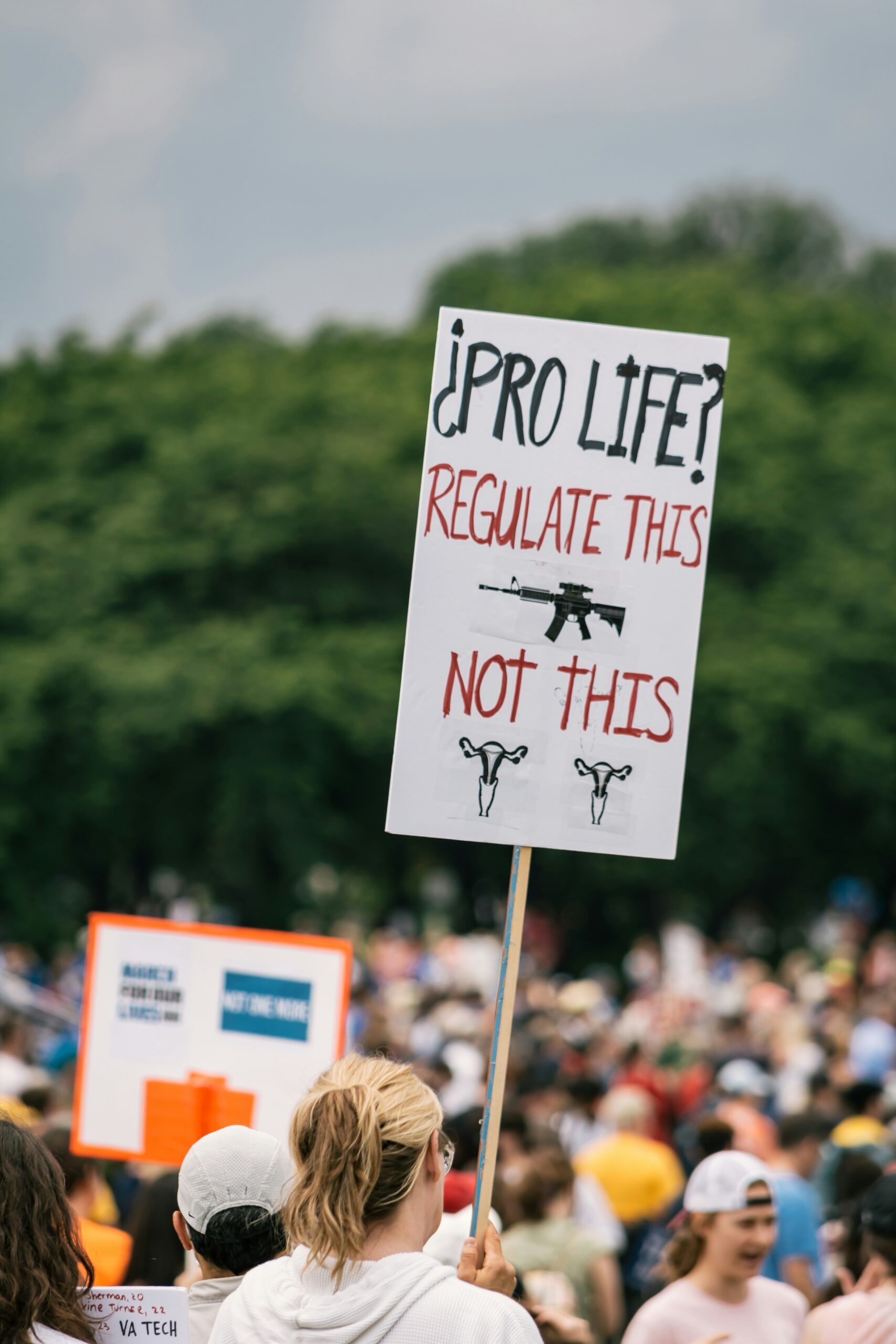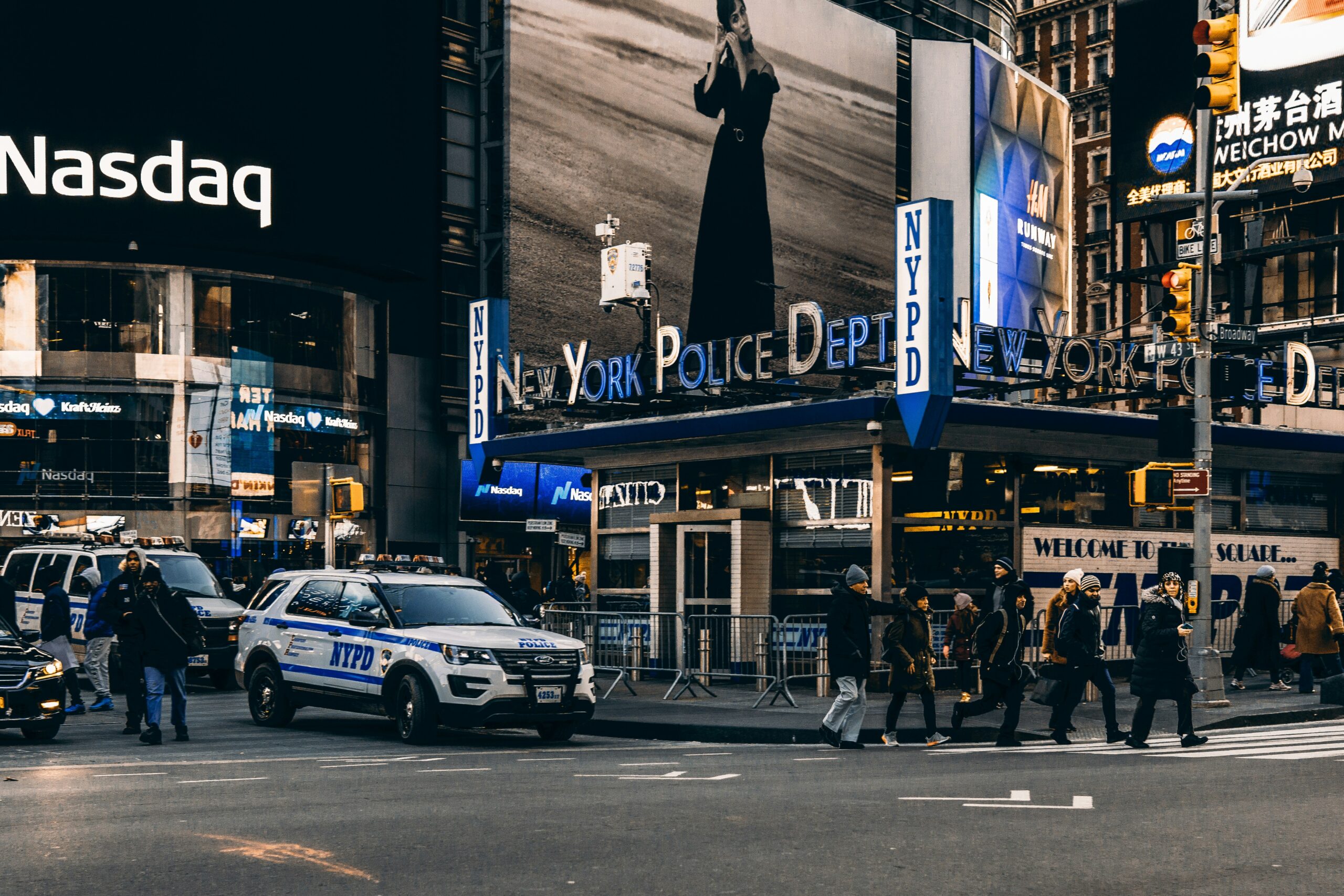Introduction: The Urgency of the Moment
Across the globe, communities are grappling with the devastating impact of gun violence, an issue that continues to escalate despite numerous efforts to curtail it. The proliferation of firearms and the increasing frequency of gun-related incidents have turned this crisis into a pressing public health challenge. Recent statistics underscore this alarming trend: in the past year alone, the United States witnessed over 40,000 deaths due to gun violence, according to data from the Gun Violence Archive. This figure is not merely a number; each statistic represents a life lost, families torn apart, and communities left in mourning.
Events in recent months have brought the issue to the forefront of public consciousness. Mass shootings, many of them in places once considered safe havens such as schools, churches, and shopping malls, have shattered the illusion of safety. In communities across the country, from urban centers to rural areas, the repercussions of gun violence are felt deeply, creating a pervasive sense of fear and urgency that transcends geographical boundaries. The collective outcry for change is a testament to the shared struggle faced by people everywhere.
This solemn day serves as a poignant reminder of the lives lost and the families affected by gun violence. It calls upon us to unite as one people to confront this harrowing reality. The urgency of the moment cannot be overstated. Together, we must advocate for effective policies, foster community support, and drive meaningful action to address the root causes of this epidemic. It is through our collective efforts that we can hope to create a safer future for all.
Understanding Gun Violence: A Global Perspective
Gun violence is a global epidemic that traverses borders, cultures, and socio-economic divides, demanding a universal response. According to the World Population Review, nations such as the United States, Brazil, and Mexico top the list in gun-related deaths, with the United States experiencing nearly 39,000 gun-related fatalities annually. In contrast, countries like Japan and the United Kingdom report significantly lower rates, often fewer than 50 deaths per year, owing to stringent gun control laws and efficient law enforcement mechanisms.
Various factors fuel gun violence worldwide. In the United States, the accessibility of firearms and socio-economic disparities are primary contributors. Brazil’s violence is often tied to organized crime and law enforcement clashes, whereas Mexico faces challenges with drug cartel conflicts. Countries that have successfully mitigated gun violence, such as Norway or Australia, demonstrate the effectiveness of comprehensive policy reform, community engagement, and mental health initiatives.
The repercussions of gun violence extend beyond fatalities and physical injury. The psychological impact on survivors, families, and communities at large is profound, perpetuating a cycle of trauma and societal dysfunction. For instance, in developing nations, healthcare systems become overwhelmed, diverting resources from critical areas like disease control and maternal health. Moreover, the economic burden is staggering; a report by the World Health Organization (WHO) highlights that gun violence incurs a global cost of roughly $174 billion annually in medical and lost productivity expenses.
Comparative data underscores that while gun violence manifests uniquely across various regions, it remains a shared problem necessitating collaborative solutions. International frameworks such as the United Nations Programme of Action to Prevent, Combat and Eradicate the Illicit Trade in Small Arms and Light Weapons emphasize the importance of multilateral cooperation. By addressing underlying causes—be it socio-economic inequalities, organized crime, or legislative gaps—through a unified approach, the global community can make strides toward a future free of gun violence. Only through shared knowledge, resources, and solidarity can meaningful, long-lasting change be achieved.“`html
Historical Context: How We Got Here
Gun violence in the United States can be traced back to the early days of the nation, when firearm ownership was both a necessity for survival and a symbol of independence. The Second Amendment to the U.S. Constitution, ratified in 1791, enshrined the right to bear arms, embedding gun ownership deeply into the country’s cultural and legal landscape. However, this historical foundation has evolved into a complex and often controversial issue over the centuries.
During the mid-19th and early 20th centuries, firearms became more advanced and readily available, coinciding with periods of significant societal and economic changes. The industrial revolution, urbanization, and the subsequent rise in poverty and crime created environments where guns were frequently used both for protection and in criminal activities. These developments laid the groundwork for the modern challenges of gun violence.
The latter half of the 20th century saw pivotal events that influenced contemporary perspectives on gun control. The assassinations of prominent figures like President John F. Kennedy, Martin Luther King Jr., and Robert F. Kennedy in the 1960s led to the Gun Control Act of 1968, which aimed to regulate firearms and curb violence. Yet, the legislation faced opposition, reflecting the deep-seated conflict between gun rights and public safety concerns.
The problem of gun violence continued to escalate in the following decades, marked by tragic incidents such as the Columbine High School shooting in 1999 and the Sandy Hook Elementary School shooting in 2012. These events highlighted the urgent need for comprehensive solutions but also showcased the divisive nature of the debate. The rise of mass shootings has intensified calls for stricter gun laws, while resistance from powerful lobbying groups has complicated legislative efforts.
This historical context reveals that gun violence in the United States is a multifaceted issue, entwined with historical, cultural, and political threads. Understanding these roots is essential in addressing the epidemic effectively and moving towards a safer and more unified society.
Impact on Communities: Stories and Statistics
Gun violence represents a pervasive issue affecting communities across the nation, reverberating through the lives of individuals and families. The statistics paint a grim picture; according to the Gun Violence Archive, there were over 40,000 gun-related deaths in the United States in 2022 alone. This staggering number encompasses homicides, suicides, and accidental shootings—each incident leaving an indelible mark on the communities involved.
A particularly harrowing account is that of Lisa, whose son was killed in a drive-by shooting while walking home from a friend’s house. “The moment I got the call, my world shattered,” she recalls. Lisa’s story is far from isolated. For every headline that makes the news, countless others suffer in silence, trying to piece their lives back together after such devastating loss.
The emotional toll of gun violence extends beyond the immediate victims. Families and friends grapple with grief, trauma, and lasting psychological effects. Children growing up in neighborhoods plagued by gun violence often experience elevated levels of anxiety and depression, diminishing their quality of life and opportunities for the future. The incessant worry of losing a loved one or becoming a victim oneself casts a long shadow over daily existence.
Economically, the toll is equally severe. Communities burdened by high rates of gun violence often suffer from decreased property values and reduced investment. Businesses are reluctant to establish themselves in areas perceived as unsafe, curtailing job opportunities and inhibiting economic growth. Moreover, public resources are strained as cities funnel more money into law enforcement and emergency medical services to address the aftermath of shootings.
Socially, gun violence erodes trust within communities. The constant threat fosters an environment of fear and suspicion, impeding the formation of tight-knit, supportive networks that are essential for community resilience. As residents become more wary of engaging with their neighbors, the social fabric begins to unravel, resulting in further isolation and lack of community cohesion.
In examining these personal stories and statistical data, the profound, multifaceted impact of gun violence on communities becomes undeniable. The emotional, economic, and social costs underscore the urgent need for comprehensive solutions to this pervasive crisis.
Advocacy and Activism: The Power of Collective Effort
In the struggle to end gun violence, advocacy and activism play pivotal roles in advancing change. Various movements and organizations have arisen, each dedicated to combating the epidemic of gun violence that plagues societies worldwide. One such movement is Moms Demand Action for Gun Sense in America, founded by Shannon Watts. This grassroots movement has since expanded into a significant sister organization of Everytown for Gun Safety, which collectively strives to enforce stronger, sensible gun laws while advocating for a culture of safety around firearms.
Key activists like David Hogg and Emma González, survivors of the Marjory Stoneman Douglas High School shooting, have transformed personal tragedy into widespread activism. Their work with the ‘March For Our Lives’ movement has been instrumental in galvanizing youth participation in gun violence prevention. Their campaigns have brought attention to the dire need for legislative reform and have been crucial in highlighting the voices of younger generations who demand a safer future.
The historical milestones in the fight against gun violence are numerous and noteworthy. The Brady Campaign to Prevent Gun Violence, named after Jim Brady, who was wounded during an assassination attempt on President Ronald Reagan, has been a critical player. Their efforts contributed significantly to the passing of the Brady Handgun Violence Prevention Act of 1993, which mandated federal background checks on firearm purchasers in the United States. This act remains one of the most substantial legislative wins for gun control advocates.
Successful campaigns showcase the immense potential of collective endeavor. The ‘Wear Orange’ campaign, initiated by the friends of Hadiya Pendleton—who was tragically shot in Chicago—has grown into a national campaign that symbolizes the call for an end to gun violence. Every year, thousands of people participate in this initiative, donning orange to raise awareness and honor victims of gun violence.
These examples underscore the transformative power of collective effort in the struggle against gun violence. They highlight the importance of continued activism and the remarkable achievements that can arise when people unite towards a common goal.
Policy Solutions: Legislative and Grassroots Approaches
Addressing the pervasive issue of gun violence demands a multifaceted strategy that combines both legislative initiatives and grassroots efforts. Legislative approaches often serve as a cornerstone in the fight against gun violence, with background checks standing out as a primary measure. Comprehensive background checks can potentially prevent firearms from falling into the wrong hands by ensuring that individuals with criminal histories or mental health issues are thoroughly vetted before purchase.
Another legislative strategy gaining traction is the implementation of gun buyback programs. These initiatives aim to reduce the number of firearms in circulation by purchasing them from residents. This approach has shown promise in various countries, as it not only decreases the availability of guns but also encourages community participation in reducing violence. Critics, however, argue that such programs can be costly and have varying degrees of success depending on the implementation and local context.
Beyond legislative measures, grassroots efforts are equally crucial in addressing gun violence. Community-based interventions focus on creating safer environments through education, support groups, and local initiatives. Programs that engage at-risk youth, provide conflict resolution training, and offer mental health services have proven effective in reducing the likelihood of violence. Organizations working at the grassroots level often possess a deep understanding of the communities they serve, allowing them to tailor their approaches to address specific needs.
Collaborative efforts between legislative bodies and grassroots organizations can amplify the impact of these interventions. By fostering partnerships and open communication, communities can develop comprehensive strategies that encompass both policy reforms and local action. Encouraging community members to take an active role in advocacy and decision-making can lead to more sustainable and effective outcomes.
To bolster the success of these approaches, continuous evaluation and adaptation of strategies are essential. Monitoring the impact of background checks, gun buyback programs, and community-based interventions can provide valuable insights into their effectiveness and guide future policymaking. Through a combination of legislative initiatives and grassroots efforts, the goal of reducing gun violence can become a tangible reality.
The Role of Media and Technology in Shaping the Narrative
The media and technology sector has a profound influence on how gun violence is perceived and addressed in society. Various forms of media, ranging from traditional news outlets to social media platforms, play a dual role in this context. On one hand, sensationalist news coverage often contributes to creating a climate of fear and misinformation. Stories focusing solely on the trauma without addressing underlying issues can skew public perception, leading to reactionary rather than proactive approaches to gun violence.
Conversely, responsible journalism can shine a light on the root causes of gun violence, such as socio-economic disparities, access to firearms, and mental health challenges. By providing comprehensive, context-rich narratives, the media can foster informed public discourse and influence policy decisions geared towards gun control and violence prevention. Moreover, investigative journalism has the power to uncover systemic issues and hold accountable those who perpetuate the cycle of violence.
Social media platforms have emerged as critical spaces for advocacy and awareness. Digital campaigns, hashtags, and viral content can bring global attention to local issues, galvanizing public support and political action. Activists and organizations utilize these platforms to mobilize communities, share stories of survivors, and advocate for legislative changes. However, the same platforms can also serve as breeding grounds for misinformation and polarization, further complicating the narrative around gun violence.
Technology itself can be harnessed for positive change in the fight against gun violence. Innovations such as smart gun technology, real-time data analytics for crime prevention, and mobile apps that facilitate community reporting and support can significantly mitigate risks. These tools, combined with robust public policies, can make a substantial impact in reducing incidents of gun violence.
Ultimately, the media and technology landscape is a double-edged sword. It bears the potential to either exacerbate the problem or contribute substantially to its resolution. By leveraging these powerful tools responsibly, society can move towards a future where gun violence is not the narrative we are forced to confront daily.
Conclusion: Moving Forward Together
The ongoing struggle against gun violence is a critical issue that touches every corner of society. This blog has highlighted the pervasive impact gun violence has on individuals and communities, regardless of race, background, or geographic location. We’ve explored the need for comprehensive and equitable policies, discussed the importance of mental health support, and underscored the role of community-led initiatives in creating safer environments. The message is clear: combating gun violence is not merely a personal or localized fight—it is a collective endeavor requiring the united effort of everyone.
As we reflect on the solemn day that symbolizes our shared loss and commitment to change, it is imperative that this reflection translates into action. Advocacy plays a crucial role in this movement; therefore, we must remain vigilant in our pursuit of informed legislative changes. Engaging with local and national leaders, supporting organizations dedicated to gun violence prevention, and participating in community awareness programs are all strategic steps that can drive substantial progress.
Beyond policy, education and awareness are pivotal. Staying informed about the causes and consequences of gun violence enables individuals to better advocate within their own spheres of influence. Sharing accurate information and dispelling myths contribute to a more educated populace, which is essential for fostering a cultural shift towards non-violence and safety.
Ultimately, our collective journey towards ending gun violence will be defined by our ability to stand united against this common adversary. Therein lies our hope—when individuals come together, transcending differences to work towards a safer future, real change is not just possible—it is inevitable. By embracing a shared responsibility and harnessing the power of community, we can create meaningful and lasting impact, ensuring that future generations are spared from the tragedies we seek to eradicate.
No struggle worth fighting is easy, but together, we can indeed forge a path forward free from the shadows of gun violence. It starts with each of us taking a step towards unity, advocacy, and informed action today.



